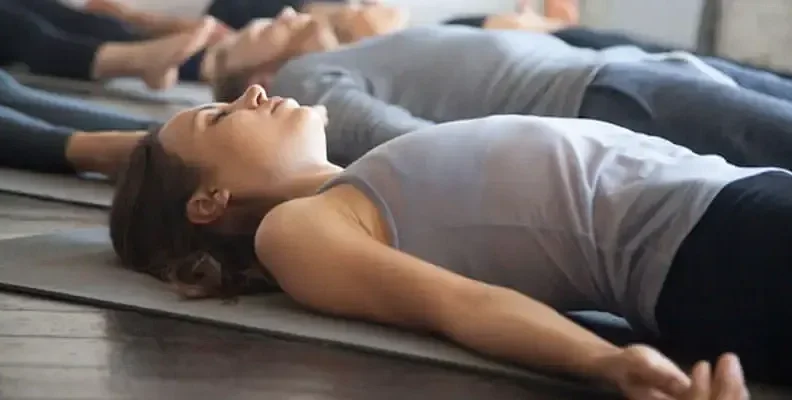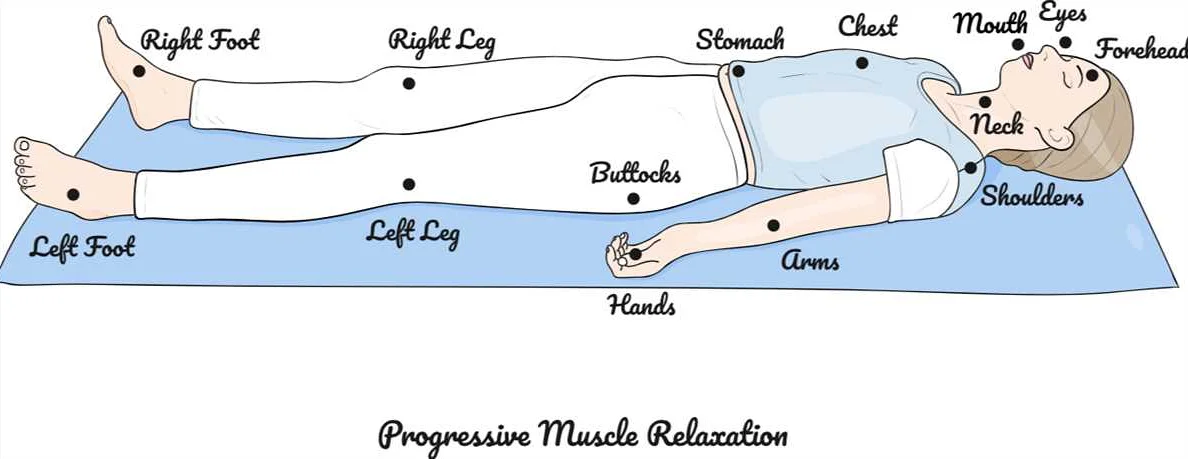A Quick Version of Progressive Muscle Relaxation
Learn how to quickly and effectively practice progressive muscle relaxation, a technique that helps reduce stress and promote relaxation. This article provides a step-by-step guide to help you easily incorporate this technique into your daily routine.
Do you often find yourself feeling stressed, anxious, or overwhelmed? It’s time to take a break and find some peace and calm. Progressive Muscle Relaxation (PMR) is a simple technique that can help you relax your mind and body in just a few minutes. Whether you’re new to relaxation techniques or a seasoned pro, this quick version of PMR is designed to fit into your busy schedule and provide instant relief.
Progressive Muscle Relaxation works by systematically tensing and then releasing different muscle groups in your body. By deliberately tensing and then relaxing your muscles, you can release built-up tension and promote a sense of relaxation. It’s a great technique to use when you’re feeling stressed, anxious, or even just need a moment of calm in your day.
To get started with this quick version of PMR, find a quiet and comfortable place where you can sit or lie down. Close your eyes and take a few deep breaths to center yourself. Focus your attention on your body and begin to intentionally tense and then relax each muscle group, one at a time. As you tense each muscle group, hold the tension for a few seconds before releasing and moving on to the next muscle group.
This quick version of PMR targets the major muscle groups in your body, including your face, neck and shoulders, arms, chest and back, abdomen, and legs. By systematically working through each muscle group, you can release tension and promote a state of deep relaxation. Remember to breathe deeply throughout the exercise, allowing your breath to further enhance your sense of calm and relaxation.
Progressive Muscle Relaxation: A Quick Method to Achieve Peace and Calm
Progressive muscle relaxation is a simple and effective technique that can help you find peace and calm in just a few minutes. This method involves tensing and then releasing different muscle groups in your body, allowing you to experience deep physical and mental relaxation.
To start practicing progressive muscle relaxation, find a quiet and comfortable space where you can sit or lie down. Close your eyes and take a few deep breaths to relax your mind and body.
Begin by focusing on your feet. Slowly tense the muscles in your feet by curling your toes and holding the tension for a few seconds. Then, release the tension and let your feet relax completely.
Move your attention up to your legs. Tighten the muscles in your calves and thighs, hold for a few seconds, and then release. Feel the tension leaving your legs as they become loose and relaxed.
Continue this process, moving up through your body. Tense and relax the muscles in your abdomen, chest, arms, hands, neck, and face. Each time you release the tension, feel a wave of calm washing over you.
As you practice progressive muscle relaxation, notice how your body feels when it is tense and when it is relaxed. Pay attention to any areas of tension or discomfort, and focus on releasing that tension during each muscle relaxation exercise.
By regularly practicing progressive muscle relaxation, you can train your body and mind to relax more easily and quickly. This technique can be especially helpful during times of stress, anxiety, or when you simply need a moment of peace and calm in your day.
Take a few more deep breaths, slowly open your eyes, and take a moment to appreciate the sense of peace and calm that comes from practicing progressive muscle relaxation.
What is Progressive Muscle Relaxation?
Progressive Muscle Relaxation (PMR) is a relaxation technique that involves tensing and then releasing different muscle groups in the body. It works by helping to reduce muscle tension and promote a sense of calm and relaxation. PMR is often used as a stress management tool and can be beneficial for those who experience anxiety, chronic pain, or difficulty sleeping.
The technique involves a systematic and progressive approach, starting with smaller muscle groups and moving up to larger ones. By tensing and then releasing the muscles, individuals can become more aware of any tension they are holding and learn to relax those muscles intentionally.
During a PMR session, a person typically lies down in a comfortable position and follows guided instructions to tense and then release each muscle group. The process usually starts with the muscles in the toes and feet, gradually moving up to the legs, abdomen, arms, shoulders, and finally the face and neck.
As individuals practice PMR regularly, they can develop a greater awareness of their own muscle tension and learn to release it more effectively. This can lead to reduced stress levels, improved sleep, and a greater sense of overall well-being.
Overall, Progressive Muscle Relaxation is a simple yet powerful technique that can be used to promote relaxation and reduce stress. By incorporating PMR into your daily routine, you can find peace and calm in just a few minutes.
The Benefits of Progressive Muscle Relaxation

Progressive Muscle Relaxation (PMR) is a technique that has been shown to have numerous benefits for both the mind and body. This simple practice involves systematically tensing and then releasing each muscle group in the body, helping to promote relaxation and reduce stress.
| 1. Reduces Muscle Tension: | PMR helps to release tension and tightness in the muscles, allowing for a greater sense of relaxation and physical well-being. |
| 2. Relieves Anxiety and Stress: | By focusing on the physical sensations of muscle tension and relaxation, PMR helps to redirect the mind away from anxious or stressful thoughts, providing a sense of calm and mental clarity. |
| 3. Improves Sleep: | Practicing PMR before bed can help to relax the body and calm the mind, making it easier to fall asleep and improve the quality of sleep. |
| 4. Enhances Mood: | Regular practice of PMR has been shown to reduce symptoms of depression and improve overall mood, helping individuals feel more positive and optimistic. |
| 5. Boosts Immune System: | Chronic stress can weaken the immune system, making individuals more susceptible to illness. PMR can help to reduce stress and promote a healthy immune response. |
| 6. Increases Body Awareness: | Through the practice of PMR, individuals become more attuned to the physical sensations in their body, helping to cultivate a greater sense of self-awareness and mindfulness. |
| 7. Enhances Relaxation Response: | By regularly practicing PMR, individuals can train their body and mind to respond more quickly and effectively to relaxation techniques, improving overall well-being. |
Overall, progressive muscle relaxation is a powerful tool for reducing stress, promoting relaxation, and improving both physical and mental health. Incorporating PMR into your daily routine can have numerous benefits and help you find peace and calm in just a few minutes.
How to Practice Progressive Muscle Relaxation

To practice progressive muscle relaxation, find a quiet and comfortable place where you can fully relax. Sit or lie down in a position that feels natural to you.
Start by taking a few deep breaths, inhaling deeply through your nose and exhaling slowly through your mouth. Take your time to settle into a relaxed state.
Once you feel calm and centered, begin the progressive muscle relaxation technique by focusing on one muscle group at a time. You can start with your hands and fingers and gradually work your way up or down your body, or you can go in any order that feels right to you.
Begin by tensing the muscles in the chosen muscle group for about 5 to 10 seconds. You can do this by making a fist, clenching your jaw, or scrunching up your face, depending on the muscle group you are targeting.
After tensing your muscles, release the tension and let the muscles relax completely. Feel the tension leaving your body and focus on the sensation of relaxation in the specific muscle group. Take a moment to fully experience the contrast between tension and relaxation.
Continue this process with each muscle group, taking your time and fully immersing yourself in the relaxation experience. Pay attention to any areas of tension or discomfort and make an effort to release and relax those muscles.
As you progress through the muscle groups, try to maintain a sense of deep relaxation and peace. If your mind starts to wander or thoughts arise, gently bring your focus back to the present moment and the sensations in your body.
After completing the progressive muscle relaxation technique, take a few moments to simply enjoy the state of relaxation you have achieved. Gradually bring yourself back to awareness, gently moving your body and stretching if desired.
With regular practice, progressive muscle relaxation can become a powerful tool for finding peace and calm in minutes. Experiment with different muscle groups and variations to find what works best for you. Remember to prioritize self-care and make time for relaxation in your daily life.
Progressive Muscle Relaxation for Stress Relief
Stress is a common problem that many people face in their daily lives. Whether it’s due to work pressures, family issues, or personal problems, finding ways to relieve stress is essential for overall well-being. One effective technique for reducing stress is progressive muscle relaxation.
Progressive muscle relaxation is a simple yet powerful exercise that involves tensing and then relaxing different muscles in your body. By deliberately tensing and releasing your muscles, you can promote a deep sense of relaxation and calmness. This technique is based on the principle that when your muscles are tense, your mind also tends to be tense. By releasing the tension in your muscles, you can also release the mental and emotional stress that accompanies it.
To practice progressive muscle relaxation, find a quiet and comfortable place where you can sit or lie down. Begin by taking a few deep breaths to center yourself and bring your attention to the present moment.
Start with the muscles in your face. Tense your forehead by raising your eyebrows as high as possible, and then release the tension, feeling the muscles relax. Move your attention to your eyes and squeeze them shut tightly, and then let go, allowing your eyelids to relax. Continue this process, moving down your body and tensing and releasing each muscle group. Pay attention to sensations of tension and relaxation as you go.
As you go through the exercise, it’s important to focus on the physical sensations of tension and relaxation, as well as any associated thoughts or emotions that arise. Acknowledge these sensations and let them pass without judgment.
Progressive muscle relaxation can be practiced for as little as 10 minutes, but longer sessions may provide deeper relaxation. With regular practice, you can train your body and mind to quickly reach a state of calmness and relaxation, even in the midst of stressful situations.
Incorporating progressive muscle relaxation into your daily routine can help reduce stress, improve sleep quality, and promote overall well-being. Give it a try and experience the benefits for yourself!